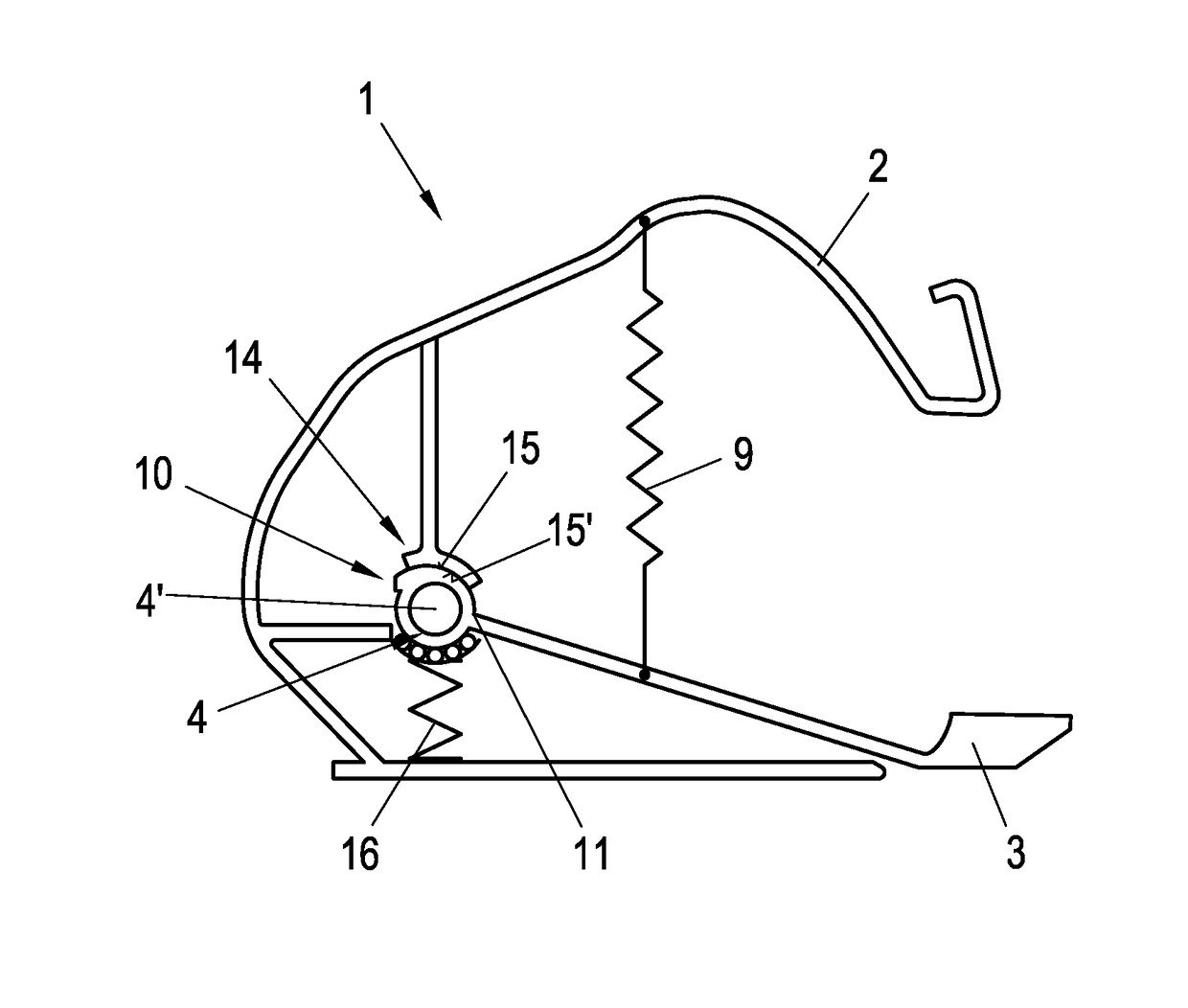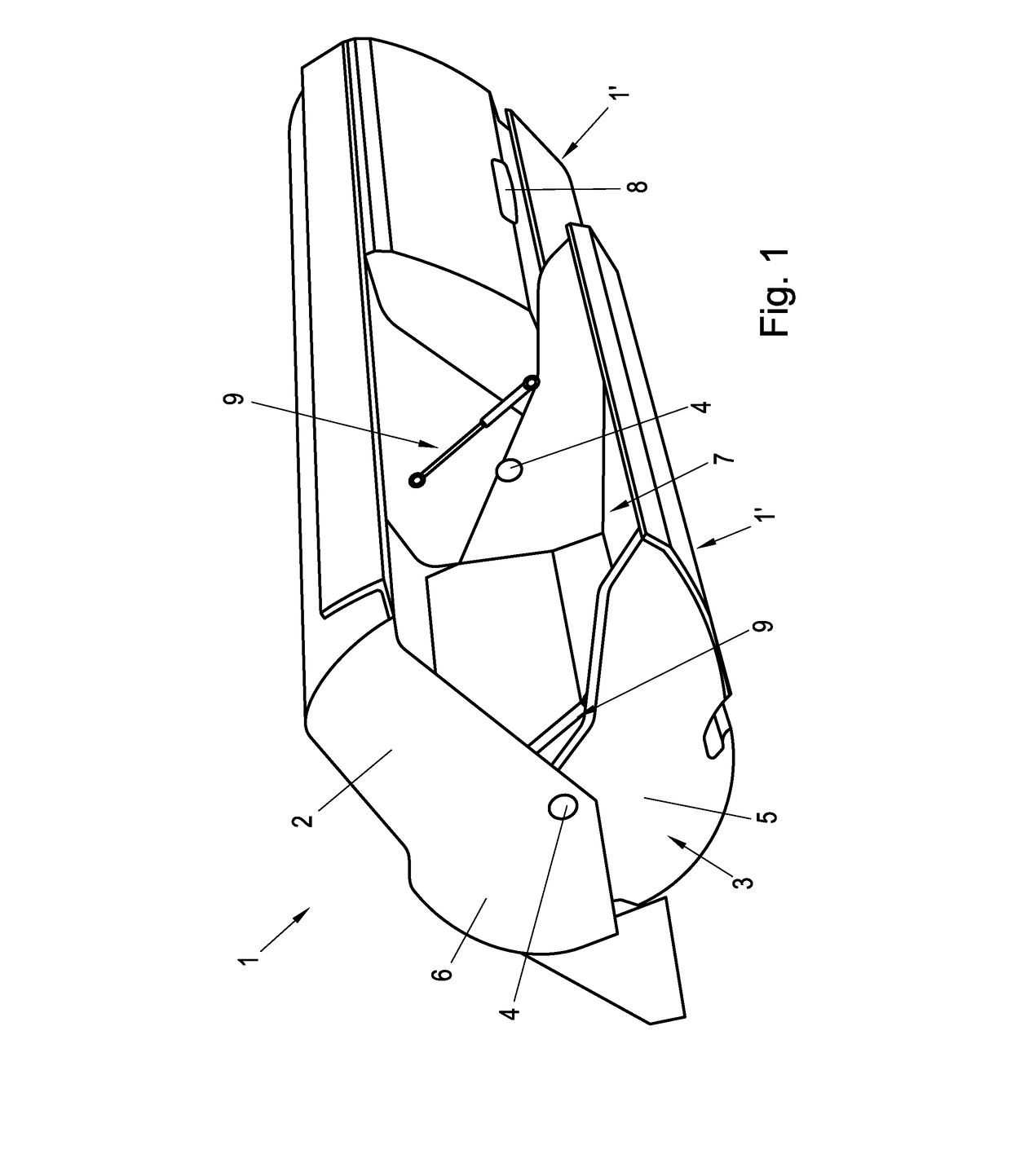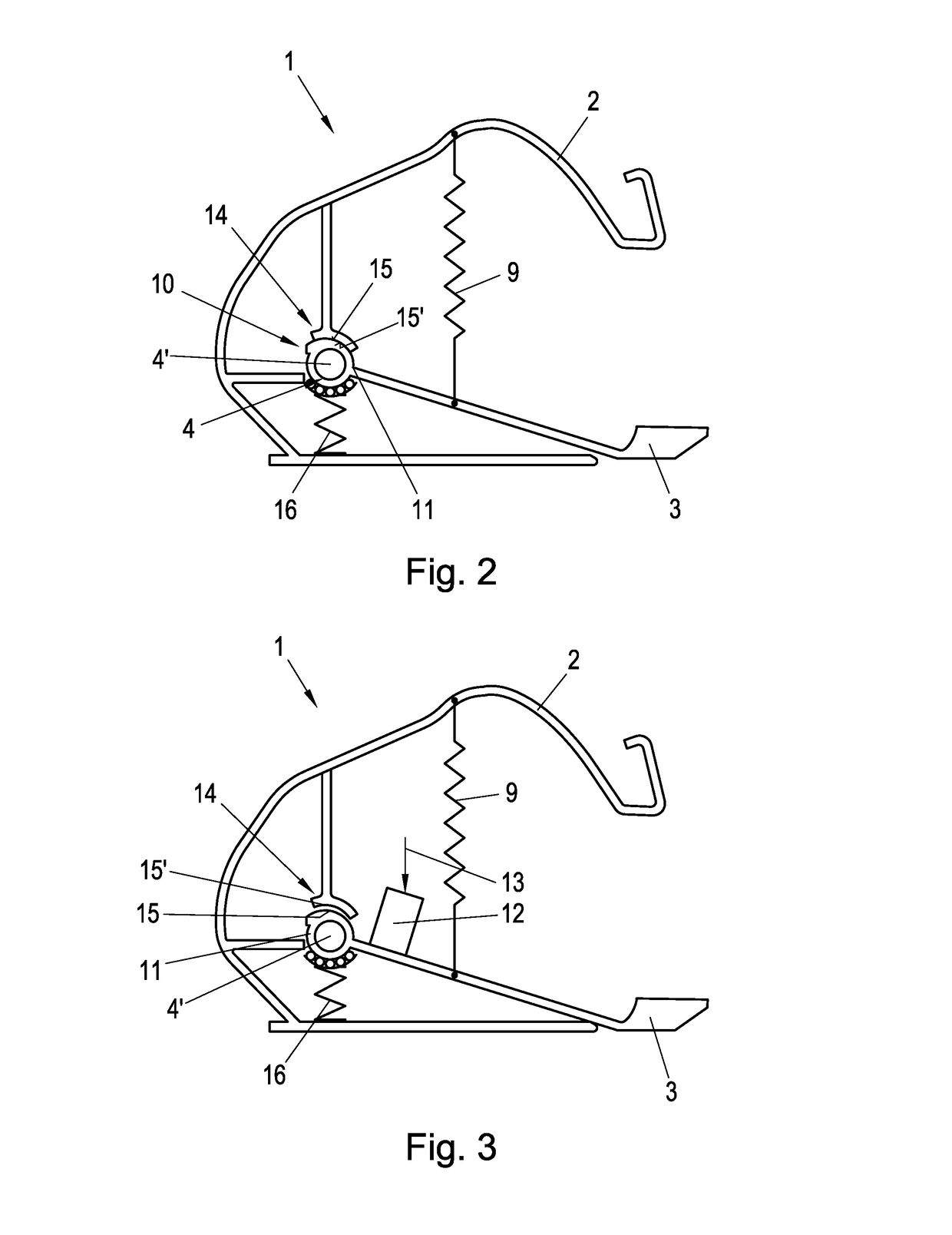Overhead luggage compartment for airplanes, and airplane
- Summary
- Abstract
- Description
- Claims
- Application Information
AI Technical Summary
Benefits of technology
Problems solved by technology
Method used
Image
Examples
Embodiment Construction
[0050]FIG. 1 shows an overhead luggage compartment 1 for airplanes, comprising in the shown embodiment two identically designed luggage compartment modules 1′. Of course, only one such luggage compartment module 1′ or more than two such luggage compartment modules 1′ may be provided. The luggage compartment modules 1′ each comprise a stationary luggage compartment element 2, which can be connected to a structural element, in particular to an aircraft fuselage (not shown). Moreover, the luggage compartment 1 comprises a movable luggage compartment element 3 which may be designed as a trough, semi-chute or U-shaped luggage compartment to accommodate pieces of luggage. The movable luggage compartment element 3 is suspended on the stationary luggage compartment element 2 on both sides by means of joints 4 having joint axes 4′. The joints 4 are located on overlapping sections of sidewalls 5 of the movable luggage compartment element 3 and sidewalls 6 of the stationary luggage compartment...
PUM
 Login to View More
Login to View More Abstract
Description
Claims
Application Information
 Login to View More
Login to View More - R&D
- Intellectual Property
- Life Sciences
- Materials
- Tech Scout
- Unparalleled Data Quality
- Higher Quality Content
- 60% Fewer Hallucinations
Browse by: Latest US Patents, China's latest patents, Technical Efficacy Thesaurus, Application Domain, Technology Topic, Popular Technical Reports.
© 2025 PatSnap. All rights reserved.Legal|Privacy policy|Modern Slavery Act Transparency Statement|Sitemap|About US| Contact US: help@patsnap.com



